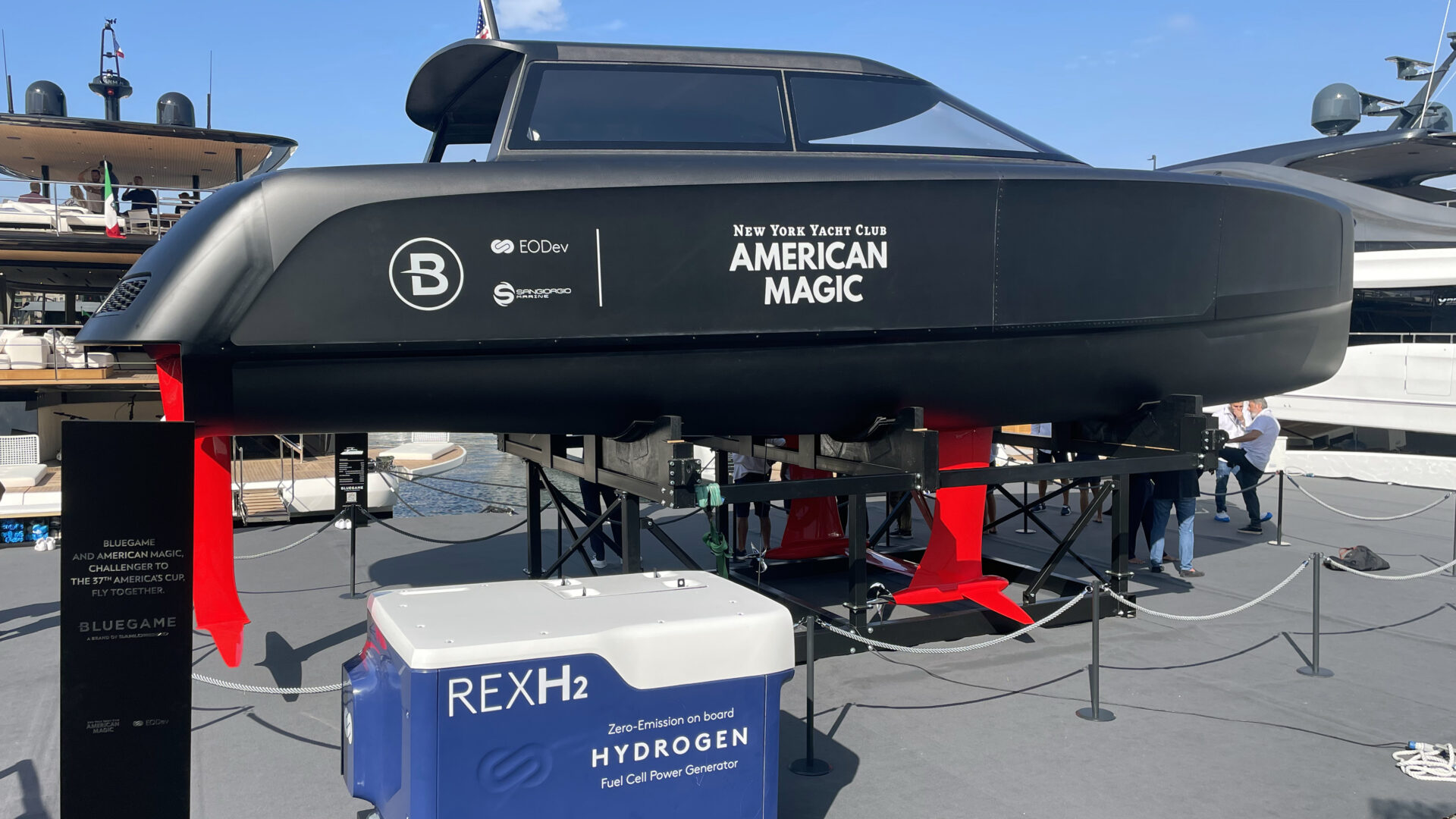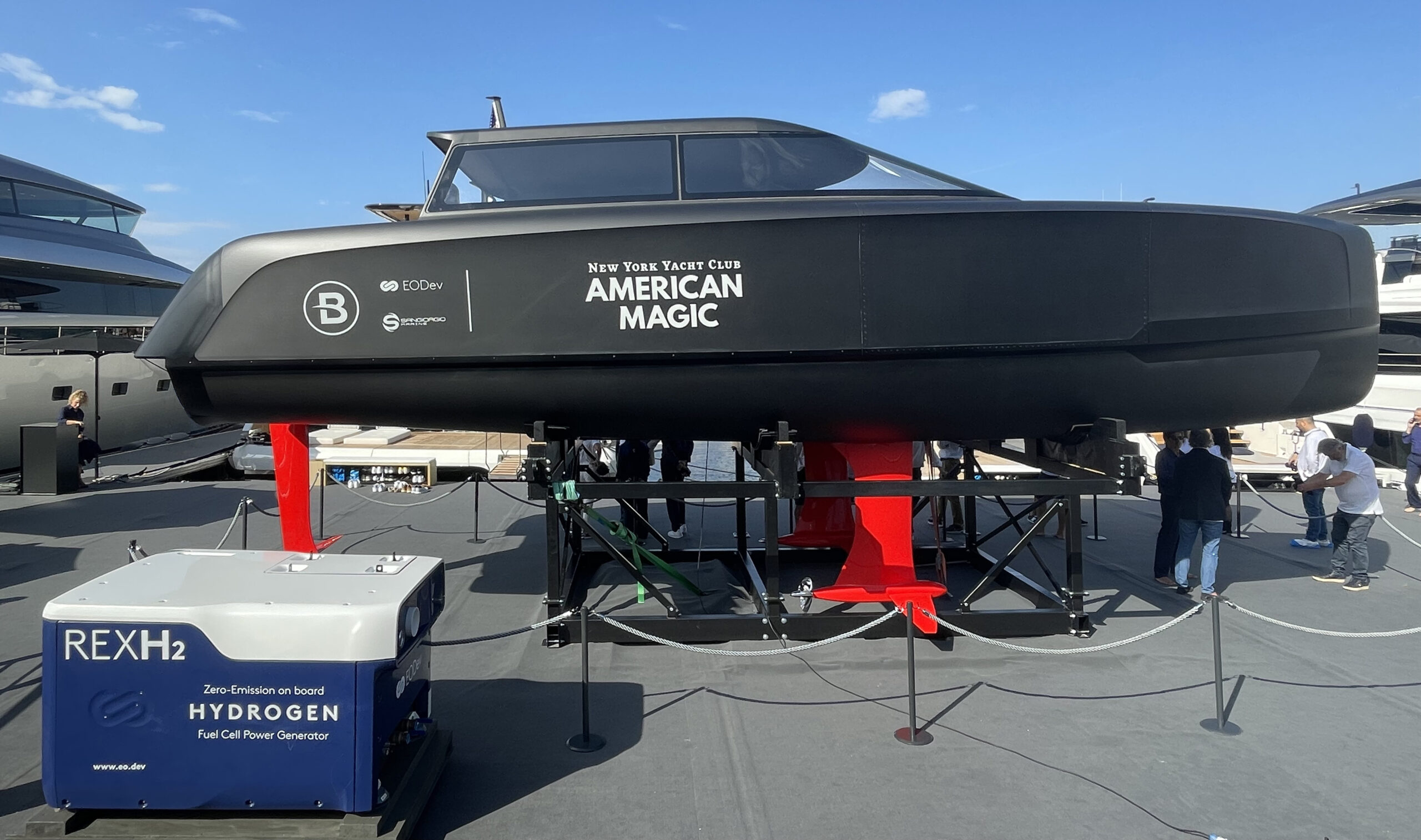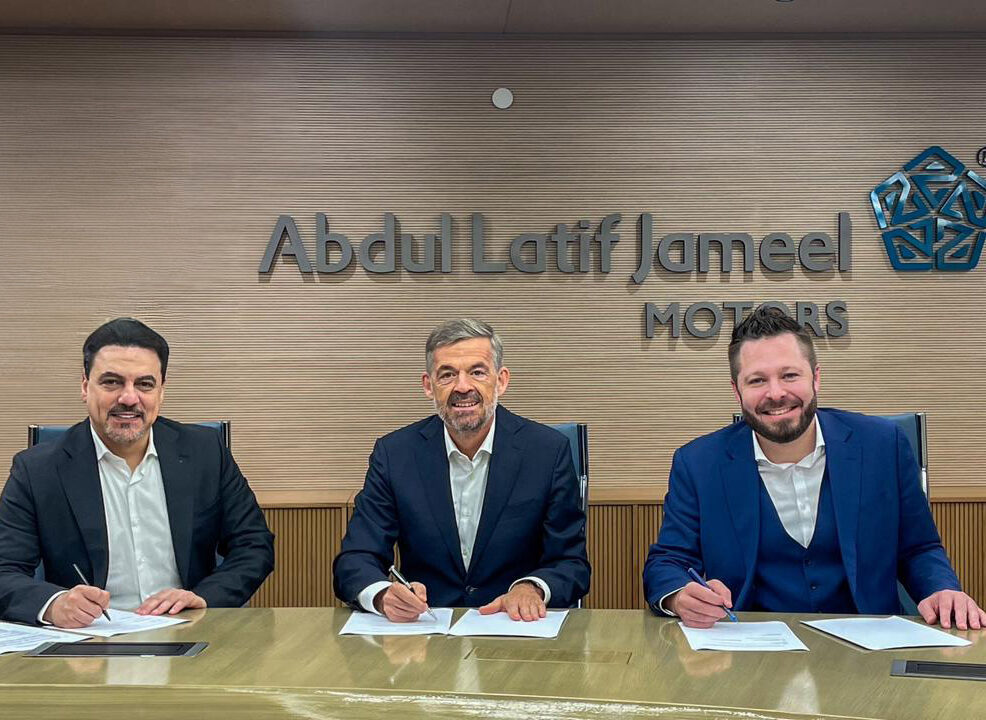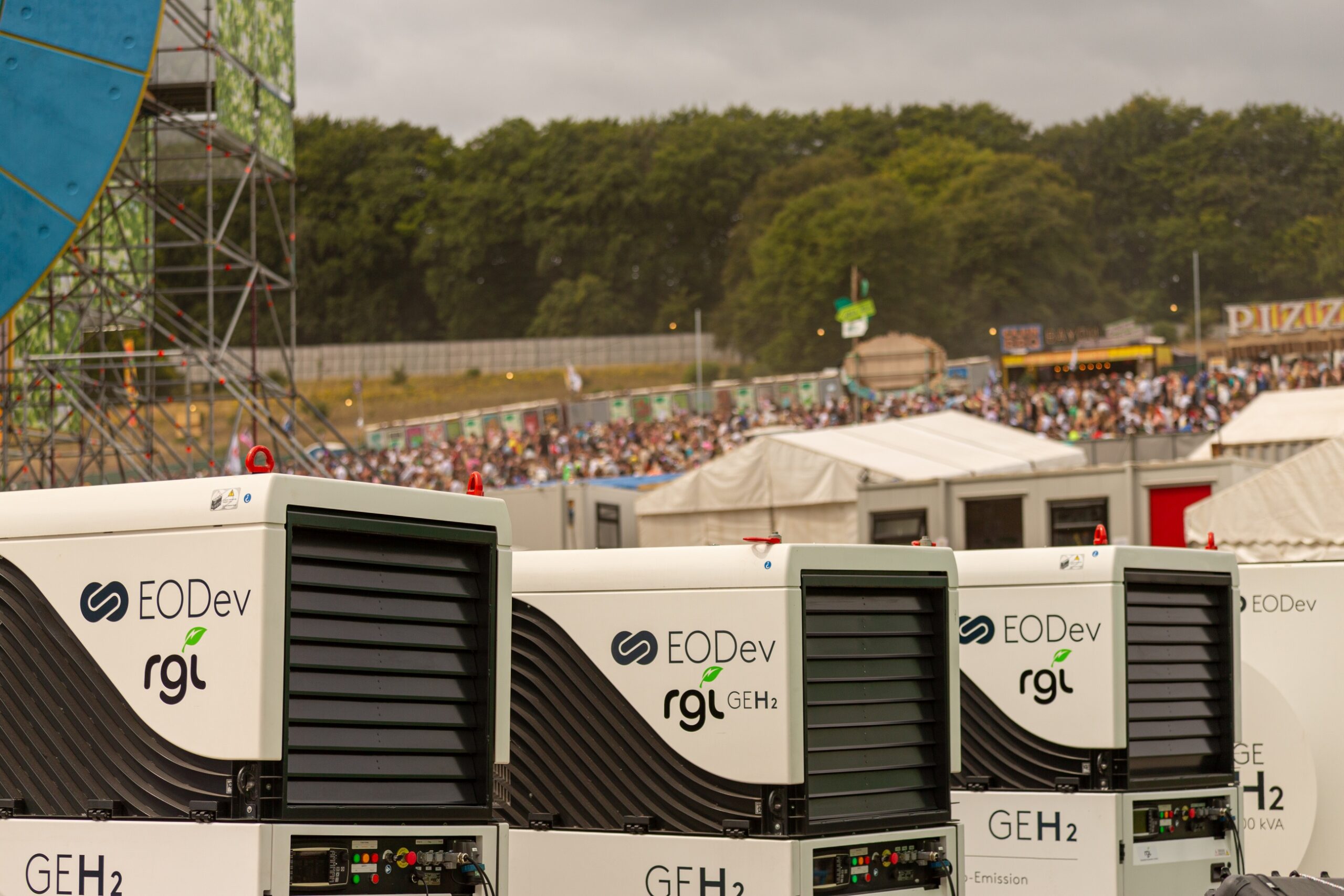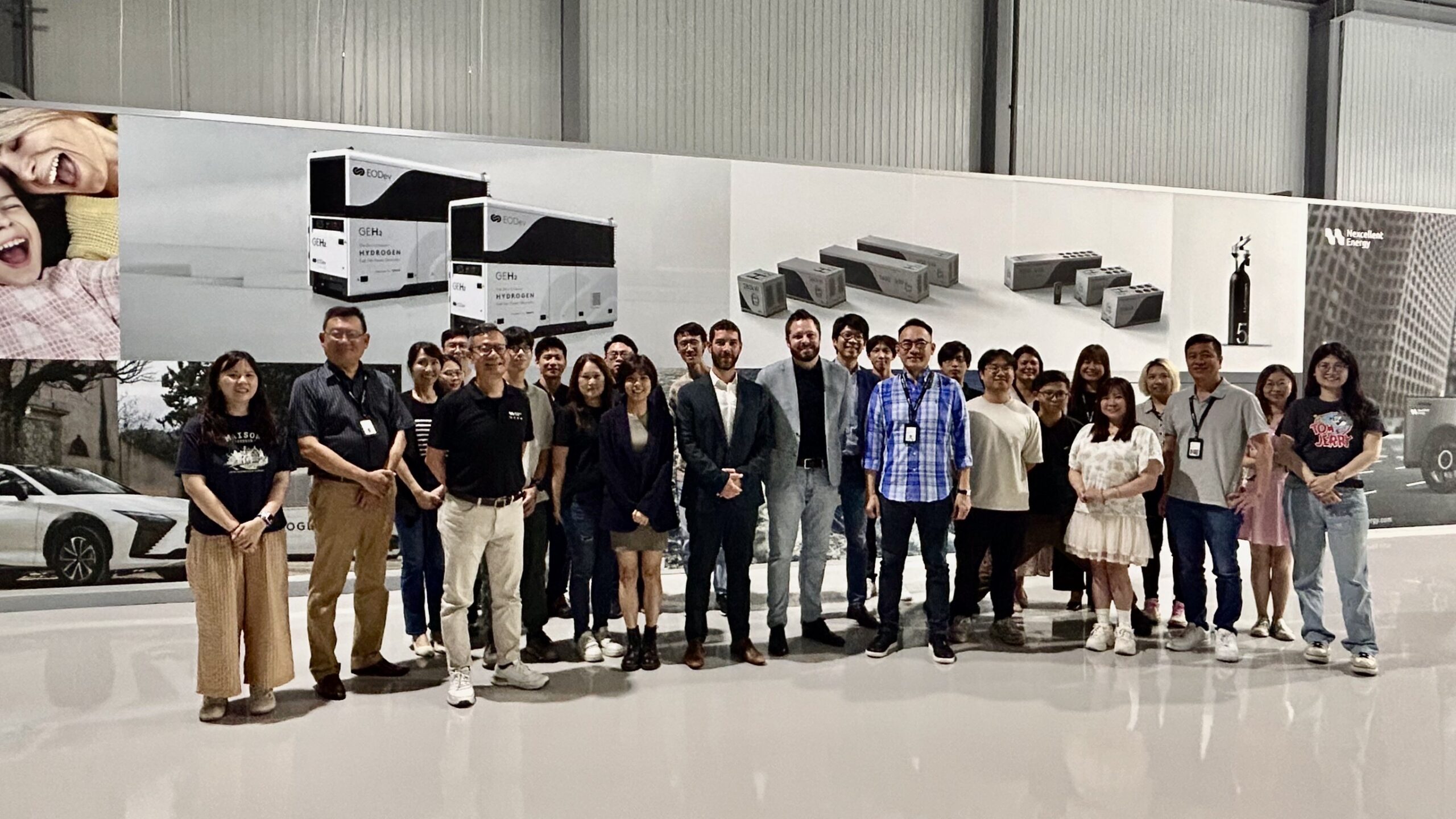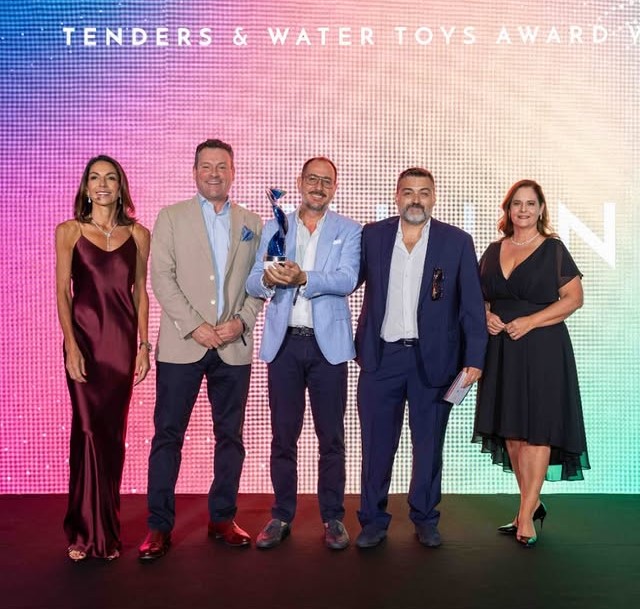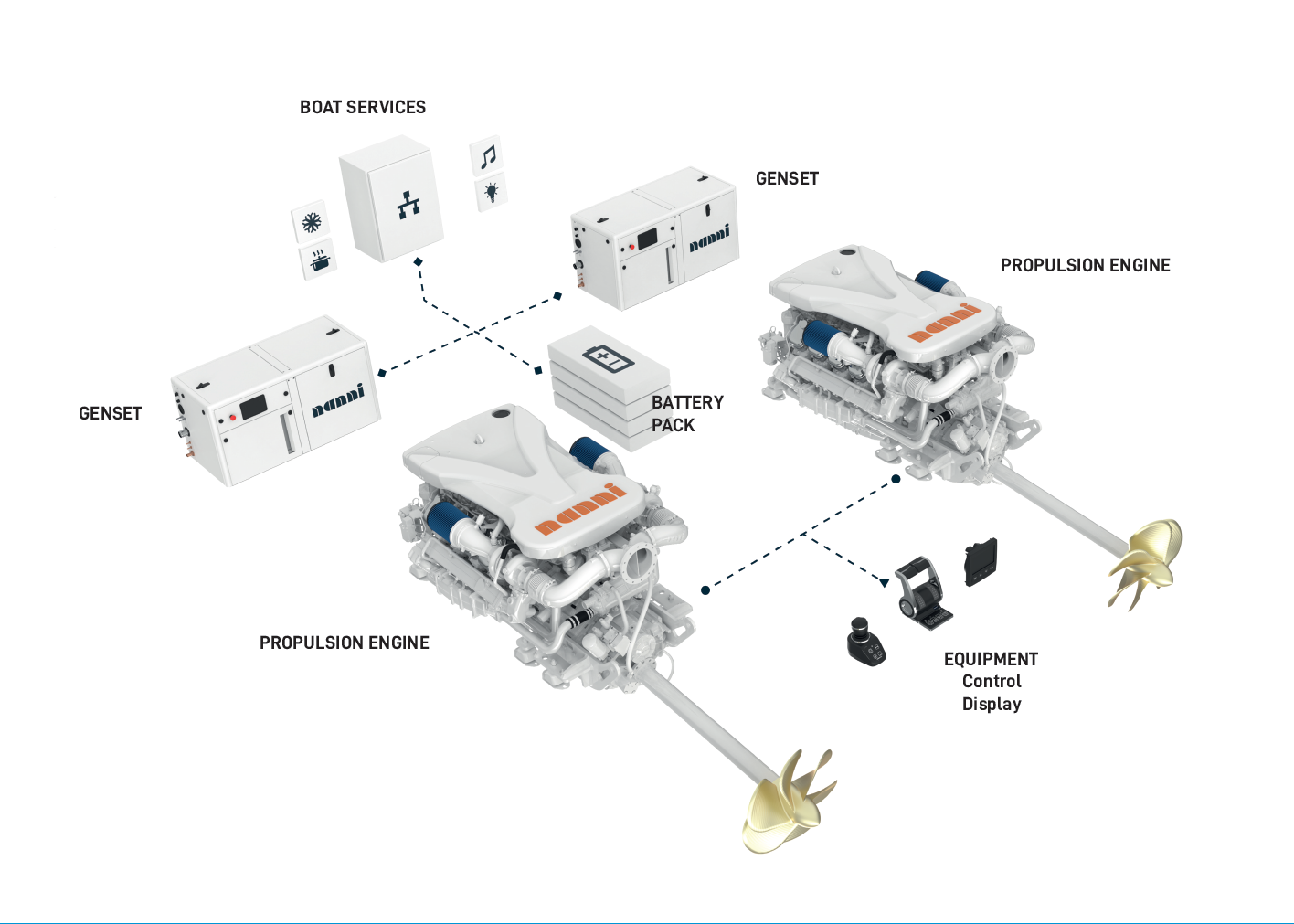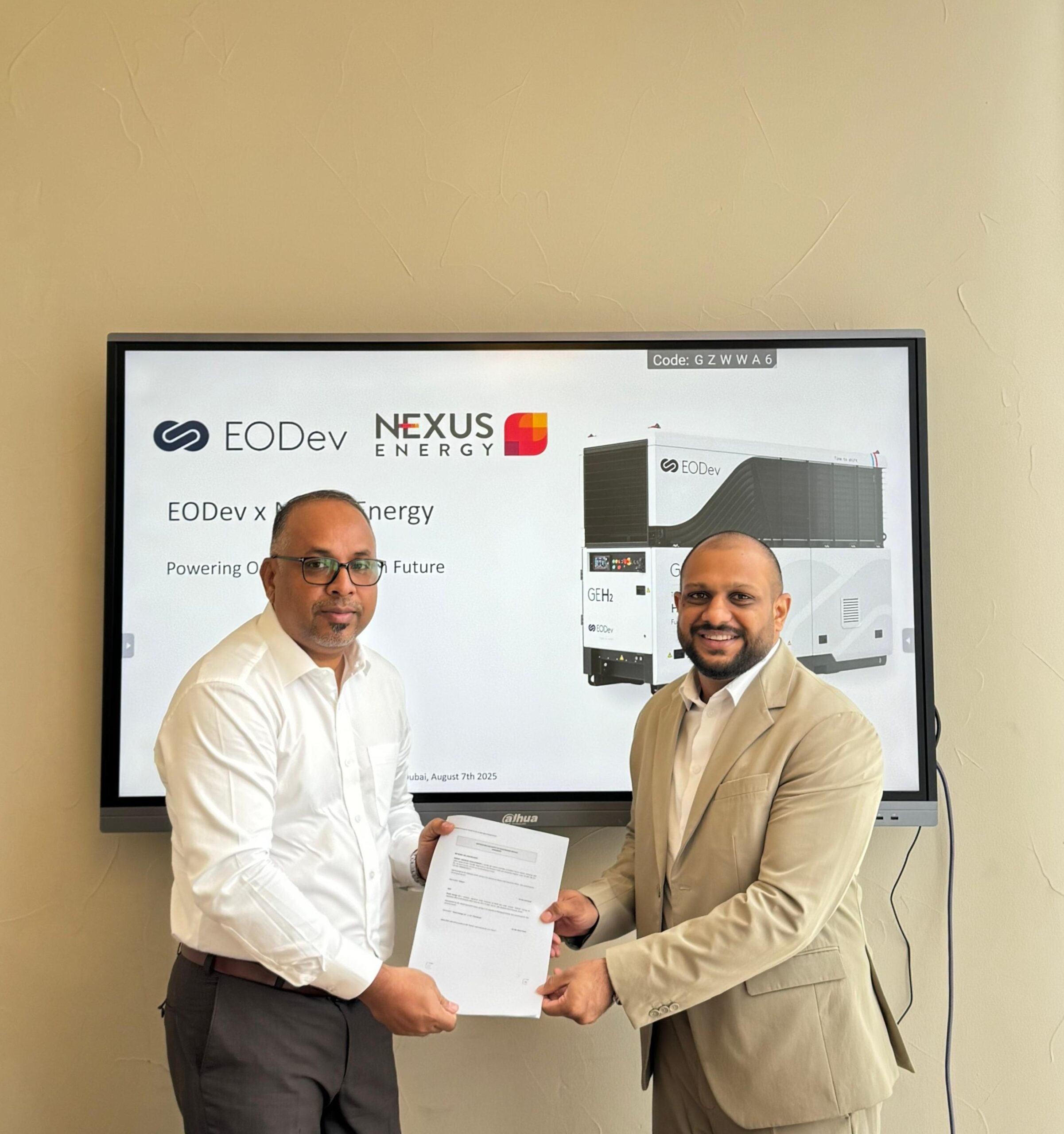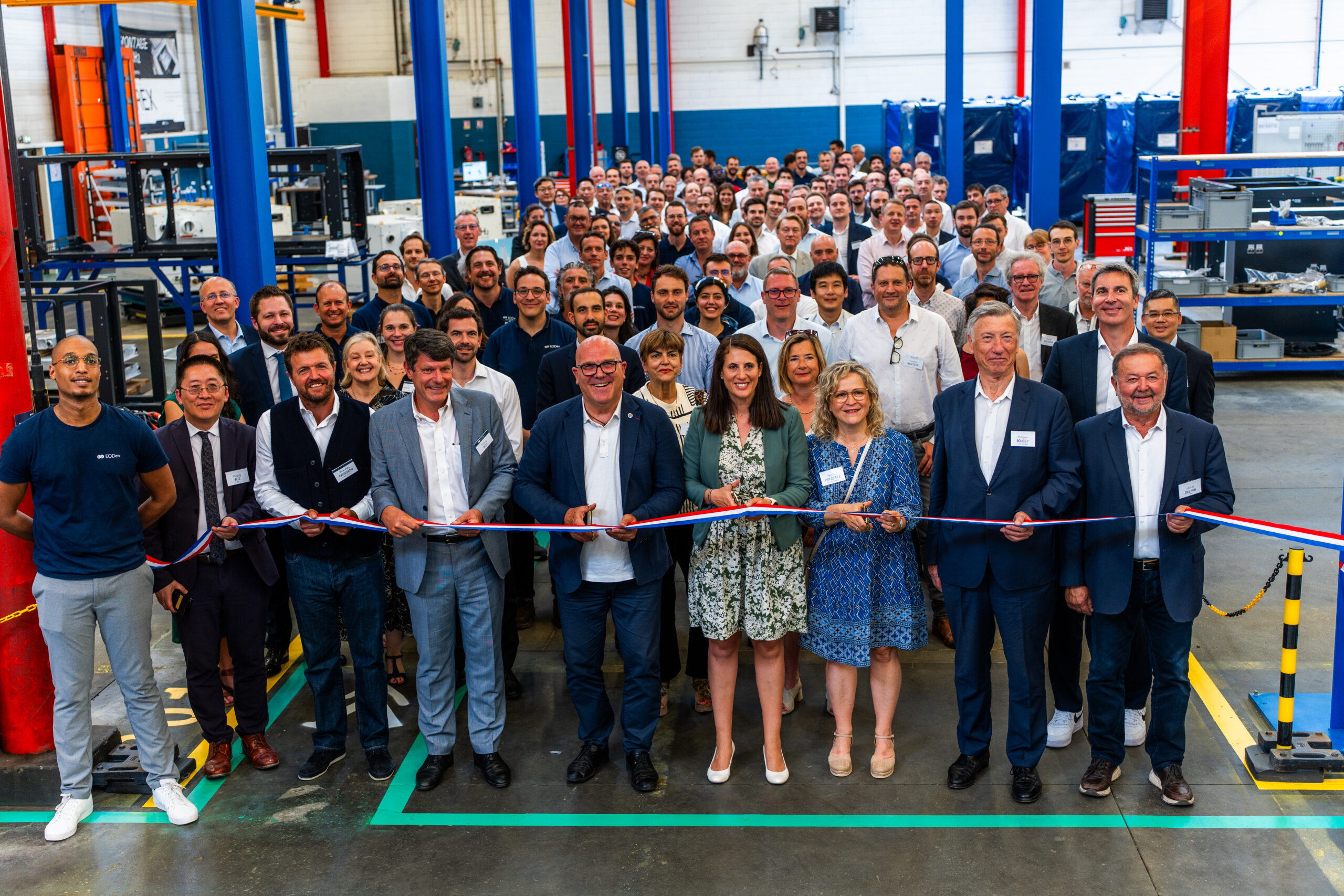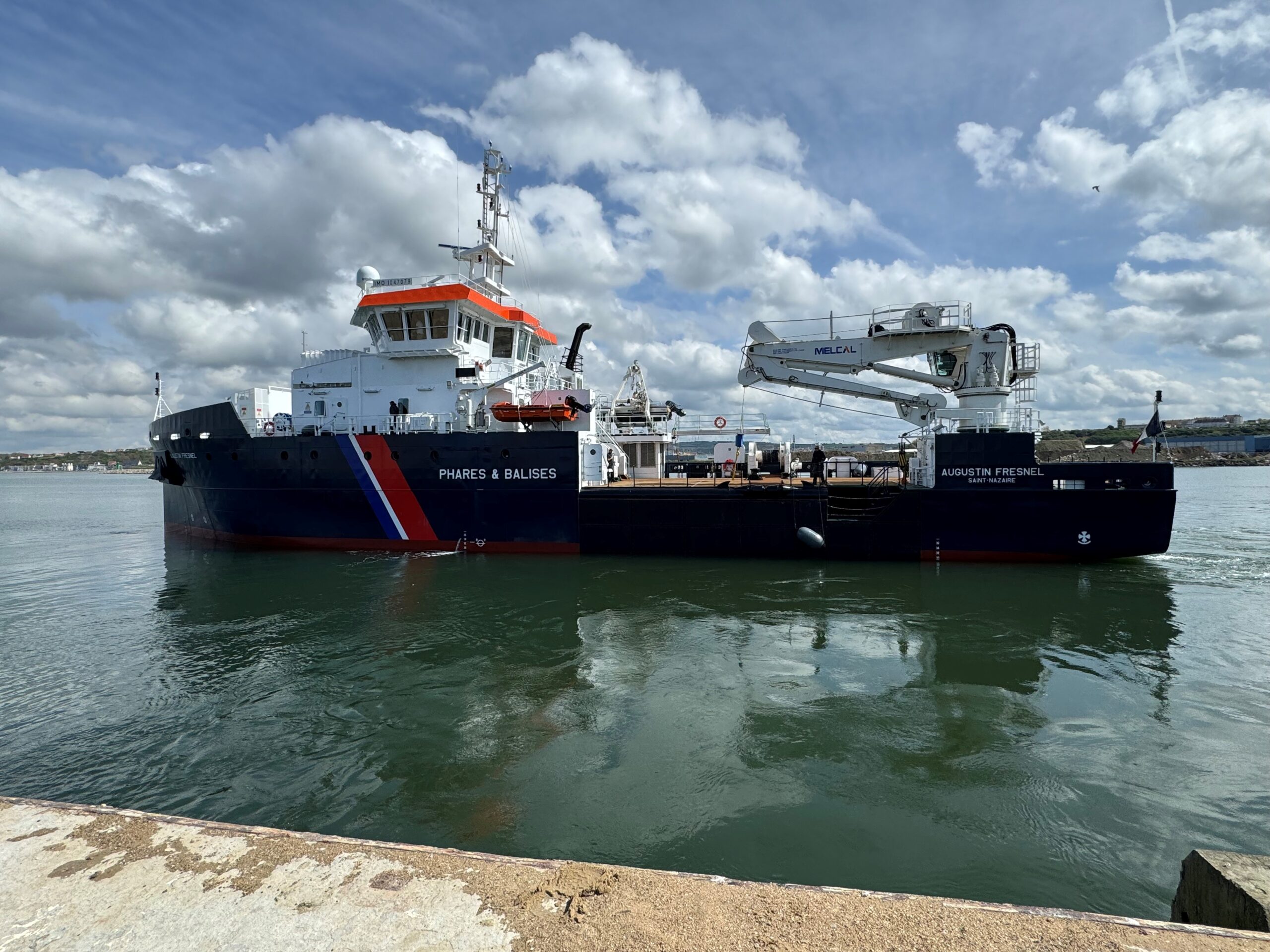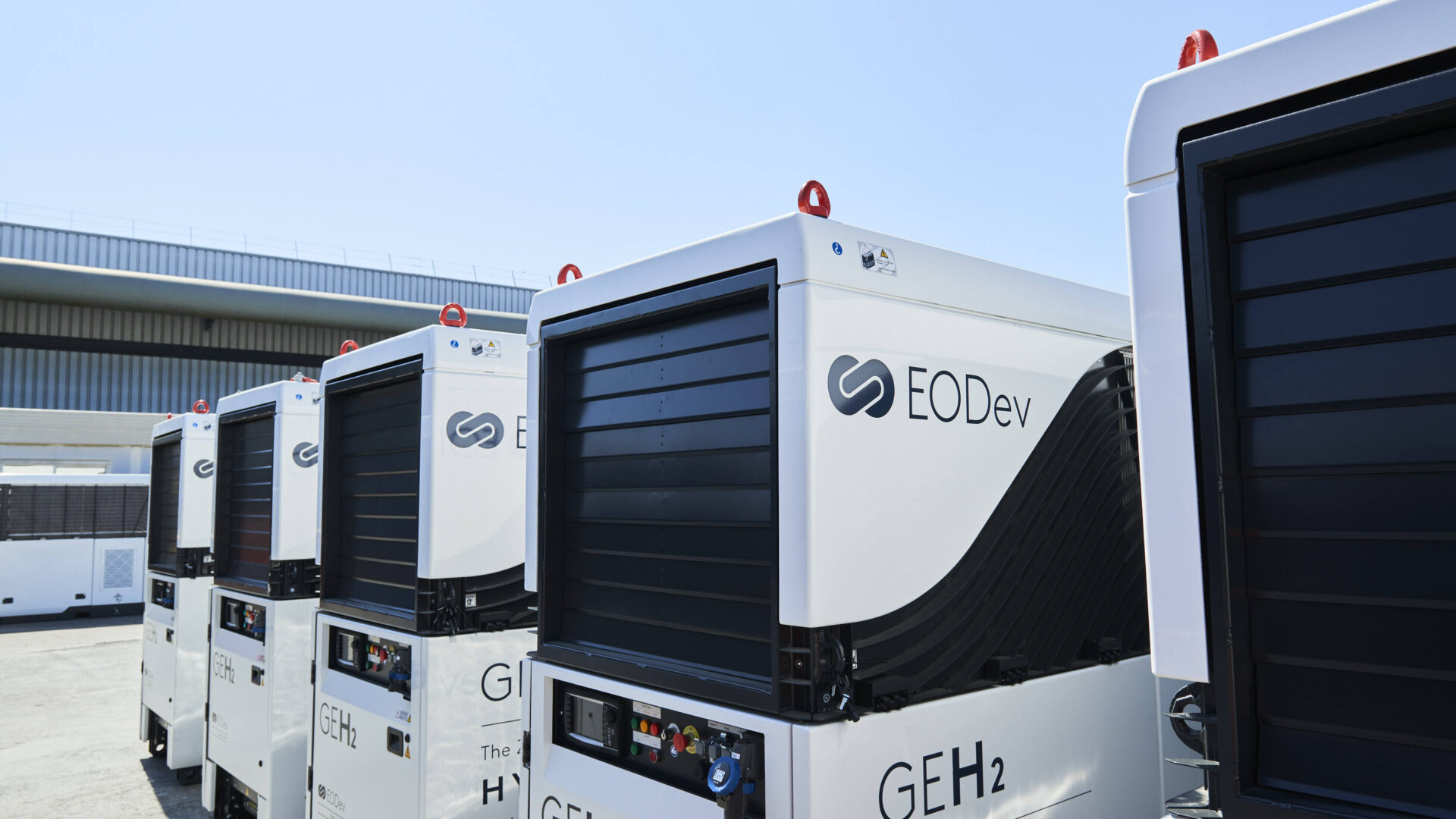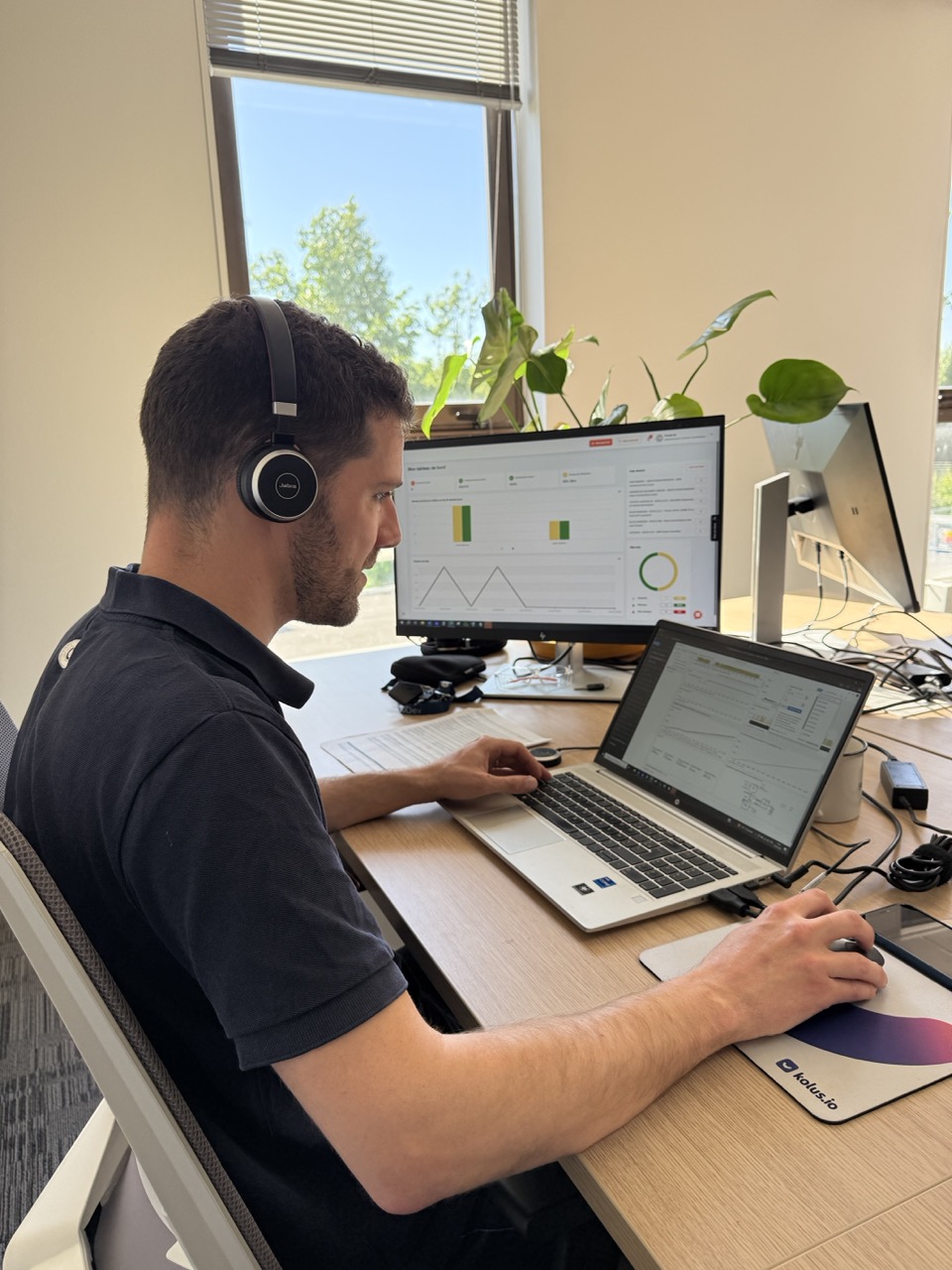On the occasion of the Cannes Yachting Festival held from 12-17 September on the French Riviera, Bluegame, the Italian shipyard and part of Sanlorenzo group, unveiled its first BGH-HSV, a 10-meter (33′) hydrogen hydro-foiling catamaran developed for New York Yacht Club’s challenger of the 37th America’s Cup, American Magic, a support vessel powered by two units of EODev’s REXH₂® — together with three 63kWh batteries.
The simple yet complex undertaking of AC’s Protocol
As part of the 37th America’s Cup Protocol for its Challengers, under the Deed of Gift principle that the Defender defines the rules of the next AC, Team New Zealand included stringent features for the tenders that are to keep up with the competing AC75s in September 2024 in Barcelona. Quite simply, the AC Defender imposed the supply of at least one flying chase boat powered by 160kW fuel cells running on hydrogen, capable of maintaining 30 knots in cruising speed over a minimum 150 nautical miles, while achieving a maximum speed of 50 knots for over one hour in total.
There are many reasons behind this set of specifications. The first reason is ecological, and aims to promote the use of clean, zero-emission speed boats rather than the usual ICE-powered rescue or support ribs when organizing any sailing regatta. The second reason is practical : the need to withstand high speeds for quite some time called for a solution that battery-only powered boats could not achieve, even on foiling catamarans, due to the heavy weight and volume occupied by such batteries. In fact, calculations made it clear that either the boat could not fly, being too heavy, or it could not hold on to its performance requirements as lighter batteries would not provide enough power and discharge too fast. Hence the need for a combination of solutions, or hybrid system using hydrogen — a principle for maritime applications EODev has been one of the main advocates of since its inception, and even before through the Energy Observer project. And the third reason has to do with efficiency : it is well-known that one of the key for sobriety in energy consumption is directly linked to the boat’s drag, which is directly linked to the shape and total surface of the hull in contact with water ; a concern catamarans, and multi-hulls in general, address rather well to combine performance and comfort at sea. While some could object that the boat does not need to be a catamaran since it flies on its foils — when its drag is minimal — it is obvious that the phase during which it remains submitted to Archimedean laws before take-off can be very energy-greedy ! It is also because of these laws that the HSV is entirely built in carbon, as every kilogram saved is worth it : the lighter the boat, the lower its energy consumption, the longer its range.
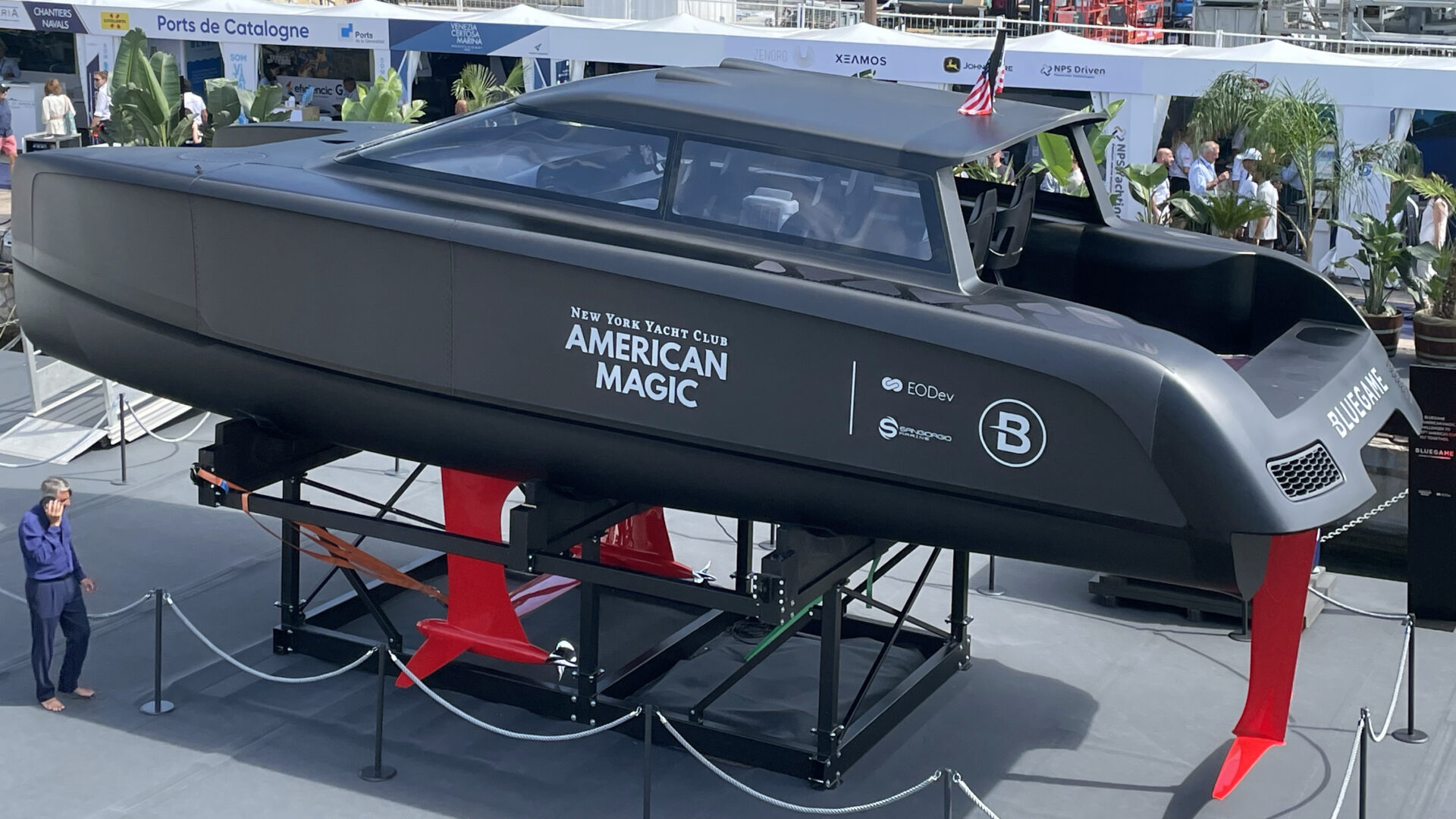
Smart optimization engineering
All in all, the specifications defined by the AC Protocol following the Chase Zero program are well in line with EODev’s philosophy for the marine application of its REXH₂® hydrogen power generator. The core idea is to use the power of the fuel cell(s) to maintain cruising speed, using hydrogen as, when the power supply from the batteries, which is limited, is used to achieve top speed or give extra power that may be sometime needed, but only once in a while — so as not to discharge the batteries too fast. In that respect, it is a hybrid system which powers electric engines through a dual, optimized, solution. The EPMS (power management system) will handle the power calls based on the ideal configuration to achieve maximum range, and balance the use of power coming from the fuel cell with the energy stored in the batteries, keeping in mind that the fuel cell can also be used to recharge the batteries if need be.
This is why, typically in the case of Bluegame’s HSV, the vessel has been engineered to rely on its 160 kW power supplied by two 80 kW fuel cells – one on each side of the central cockpit – to handle the required cruising speed. Hence of course the need for an efficient hull design and overall lightness, as the power needed to achieve one extra knot follows more or less an exponential curve that depends on the weight of the boat and the resistance to forward movement of the hull. Bluegame’s HSV for American Magic thus carries four hydrogen tanks, two on each side, each containing over 8 kg of hydrogen compressed at 350 bars for a total “fuel” capacity of over 33 kg.
To put it simply, converting this amount of hydrogen into energy to provide 160 kW of power continuously will give the pilot approximately 3.5 hours of autonomy at full FC power. Cruising at 35 knots, this is equivalent to over 120 nautical miles achieved from the fuel cells only. Adding in the 190 kWh available from the three batteries, taking into account the limitations of their SOC (State of Charge) to avoid full discharge, will provide the pilot an extra hour of navigation at that same cruising speed, thus reaching a total range of over 150 nautical miles.
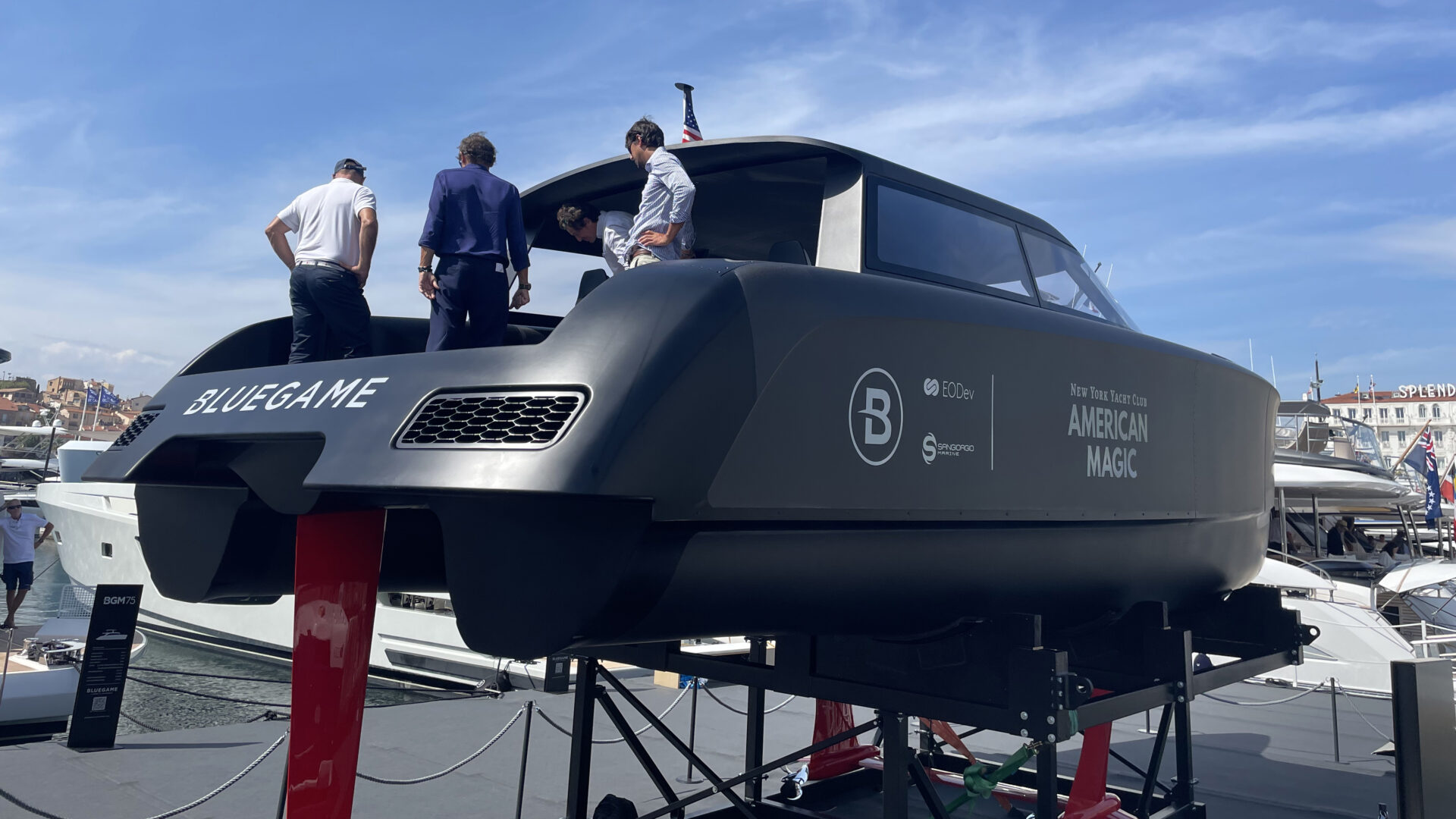
Call me Tetris
The complexity of the project therefore lies in… everything that is a part of its puzzle, to have all the components together — and make them work — in a tiny space. Think Formula One, but add to that challenge the fact that the vessel needs to operate efficiently, with proper seakeeping ability, in two different “modes”: when cruising the traditional way, and when flying, at quite high speed (for a boat). This boat is “crossbred” from a Formula One car and a fighter jet, with the added challenge that it does not operate on an asphalt road or circuit, but must face uneven seas, swell, waves and various wind conditions without affecting its stability and comfort. This is possibly the worst of all combinations when moving from point A to point B ! And, even better, the HSV will do that without CO₂ or PM emissions, and without much noise except for the sound of the propellers in the water.
Luca Santella, Head of Product Strategy at Bluegame, who is also project leader on the HSV, explains how it has been a daunting challenge, but one definitely worth it : “The conception and development of this tiny boat has involved hundreds of people, when including all the teams behind each of its components and features. I could not list every piece of engineering and manufacturing that was quite specifically developed or brought together to make it happen, it is endless, but will still mention two main ones as significant milestones: the electric motors created, crafted by Lucchi – works of art really – and the foils developed by Caponetto. Without of course forgetting EODev for the fuel cell and Philippe Briand’s studio for the hull design or Danfoss and METS Technologies on the software side. The range of experts and expertise taking their share in the project coming to fruition is countless. And everyone can, and must, be proud of the achievement, as, in true Italian spirit and fashion, she is also a beautiful boat !”
Jérémie Lagarrigue, EODev’s CEO, is equally proud of the end result: “Many years ago I was involved in the development of the very first electric motor yacht on foils. A decade later, seeing this amazing machine not only fly but also combine batteries and our REXH₂® for clean propulsion technology, with good range, shows how human engineering and creativity can always aim higher for the better, and is a testimony that today’s challenges for a clean future on the seas can be responded to. And as Luca says, to make it even better, she’s really good looking too !”
